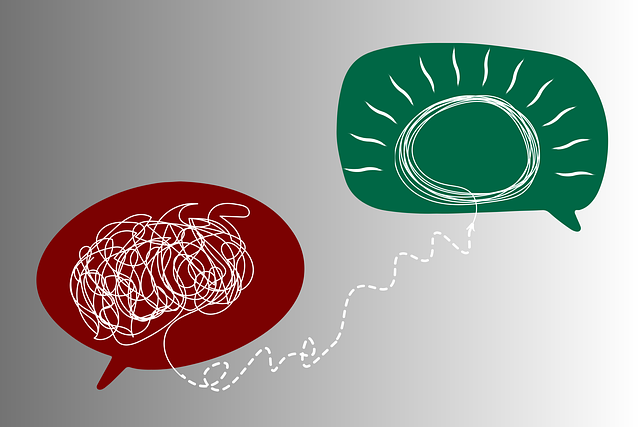Adjustment Disorder, a hidden mental health challenge, requires targeted therapy like cognitive-behavioral techniques. Comprehensive approaches include wellness coaching and holistic healing, with a focus on managing risks and safeguarding clients. Professionals must recognize vulnerabilities like complex trauma and self-harming behaviors, and integrate self-care practices to mitigate workplace hazards. By combining evidence-based practices, supervision, and community outreach, mental health practitioners can create a supportive environment for those dealing with Adjustment Disorder while ensuring their own well-being.
Mental health professionals often encounter clients facing various challenges, yet Adjustment Disorder, a common yet overlooked condition, demands heightened awareness. This article explores the intricacies of risk assessment within this context, focusing on strategies to identify and mitigate potential hazards for effective therapy. By delving into understanding Adjustment Disorder and implementing safeguards, we aim to enhance clinical practice, especially in offering tailored therapy for those struggling with this often-overlooked mental health issue.
- Understanding Adjustment Disorder: A Common yet Overlooked Challenge in Mental Health
- Identifying Risks and Implementing Safeguards for Effective Therapy
- Strategies for Mitigating Potential Hazards in Clinical Practice
Understanding Adjustment Disorder: A Common yet Overlooked Challenge in Mental Health

Adjustment Disorder, often overlooked within the mental health profession, is a common challenge that significantly impacts individuals’ ability to cope with life transitions and stressful events. This disorder goes beyond typical adjustment issues; it’s a complex response characterized by emotional distress, difficulties in social functioning, and maladaptive behaviors. Mental wellness coaching programs and development initiatives play a pivotal role in recognizing and addressing this issue.
By integrating effective therapy for Adjustment Disorder, such as cognitive-behavioral techniques, mental health professionals can empower their clients to navigate transitions more effectively. Moreover, burnout prevention strategies for healthcare providers are essential, as they contribute to fostering resilience not only in practitioners but also in their patients. Emotional healing processes, when incorporated into treatment plans, offer a holistic approach that recognizes the intricate link between emotional well-being and overall mental wellness.
Identifying Risks and Implementing Safeguards for Effective Therapy

Identifying Risks is a crucial step for mental health professionals to ensure effective therapy and client well-being. This involves recognizing potential hazards within the therapeutic process, such as complex trauma histories, self-harming behaviors, or challenges related to specific disorders like Adjustment Disorder. Professionals must be adept at assessing vulnerabilities and understanding how these factors might impact a client’s ability to engage in therapy and achieve positive outcomes.
Implementing robust safeguards is integral to creating a safe and supportive environment for healing. This can include integrating evidence-based practices tailored to address complex needs, establishing clear boundaries and communication protocols, and incorporating strategies for crisis management. Additionally, engaging in regular supervision and participating in professional development opportunities related to trauma-informed care and specialized therapies, such as those designed for Adjustment Disorder, enhances practitioners’ skills in recognizing and mitigating risks effectively. Community Outreach Programs and Mental Health Education Initiatives can also play a vital role by fostering resilience and promoting mental wellness on a broader scale.
Strategies for Mitigating Potential Hazards in Clinical Practice

Mental health professionals encounter various risks in their daily practice, from managing complex client cases to dealing with potentially traumatic situations. Implementing robust strategies for hazard mitigation is paramount to ensure a safe and supportive clinical environment. One effective approach involves integrating self-care practices tailored to address mental wellness. Professionals should prioritize regular journaling exercises, where they reflect on personal experiences, emotions, and challenges encountered in the workplace. This introspective mental wellness journal can serve as a valuable tool for processing complex cases and identifying potential signs of stress or burnout.
Additionally, incorporating self-care routines and mind over matter principles can significantly enhance resilience. This may include setting clear boundaries between work and personal life, engaging in regular physical exercise, practicing mindfulness meditation, and adopting healthy coping mechanisms. By fostering a culture of self-awareness and proactive mental health management, professionals can better navigate the challenges inherent in their role, ultimately improving client outcomes and enhancing their own therapy for adjustment disorder.
Mental health professionals play a vital role in supporting individuals dealing with adjustment disorders, which often go overlooked. By understanding this common challenge and implementing robust risk assessment strategies, therapists can enhance their clinical practice and deliver effective therapy. Identifying potential hazards and utilizing specific mitigation techniques are key to creating a safe environment for both clients and practitioners. Through these measures, mental health professionals can ensure they provide the best possible care while navigating the complexities of adjustment disorder treatment.











